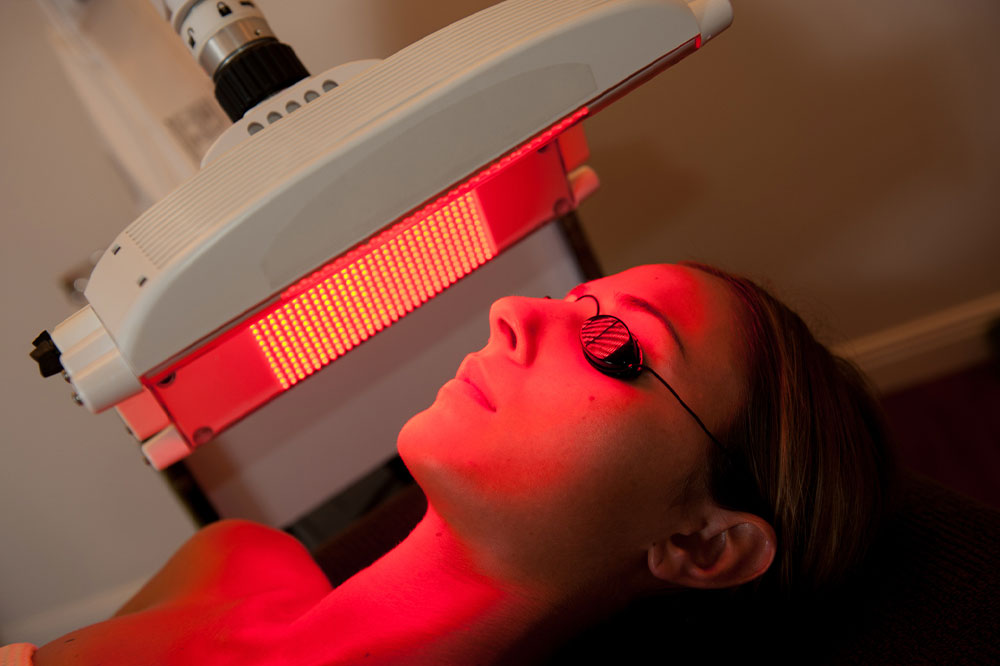Red Light Therapy – Uses and Top Devices
Red light therapy (RTL) has emerged as a key player in the realm of wellness, attracting considerable attention from wellness enthusiasts. By harnessing specific wavelengths of red and near-infrared light through targeted delivery of light, this therapy can offer many benefits, from improving skin health to healing inflammation. This revolutionary non-invasive treatment can have varying effects on different skin types. Here are some of its key features and top devices to consider:
What is red light therapy?
With age, the skin tends to lose its elasticity, and the natural process of skin cell rejuvenation and multiplication can slow down. Red light therapy involves the use of low-wavelength light that revitalizes the skin cells.

Unlike laser or intense pulsed light (IPL) treatments, RLT does not harm the top layer of the skin. Laser and IPL damage the outer skin layer to an extent to trigger the healing process. RLT, on the other hand, reaches about 5 millimeters beneath the surface of the skin.
Uses
The effectiveness of the therapy is still being studied. As the results vary from person to person, it is essential to consult a healthcare professional to assess the suitability and potential risks for specific skin types. Currently, research shows that red light therapy is relatively non-invasive and can be used for the following purposes:
Improves skin health: Red light therapy boosts collagen production and blood flow to the tissues. It also eases swelling in skin cells, repairs any damage to the skin due to the sun, and reduces wrinkles, redness, stretch marks, age spots, and scars. It also helps with acne, uneven skin texture due to pigmentation or other factors and helps retain moisture in the skin.
Helps with wound healing and scar reduction: RTL is known to expedite the process of healing wounds, injuries, and scars by boosting blood circulation and oxygenation to the affected area.
Top devices
Red light therapy tools should be used in moderation, and it is best to consult a healthcare professional or dermatologist before using the tool. One should also seek guidance regarding the appropriate duration, device type, and frequency of use. One can get many options for home use. Usually, at-home red light therapy devices are small, user-friendly, portable, and known for their durable construction and consistent light output. Here are the top red light therapy devices to consider:
Joovv Solo 3.0
The Joovv Solo is a powerful and versatile device designed for home use. It has high-quality LEDs that emit therapeutic wavelengths of red and near-infrared light. The Solo offers a large treatment area and adjustable intensity settings, making it suitable for targeted treatments or full-body sessions. The device is user-friendly and comes with an app for ease of control and scheduling.
LightStim
LightStim is a trusted brand in the red light therapy industry, known for its effectiveness and quality. Its handheld devices are FDA-cleared and utilize multi-wave technology to deliver a combination of red and infrared light. LightStim devices are compact and portable and provide targeted treatments for areas of concern, such as wrinkles, acne, and pain relief. They are easy to use and come with customizable treatment times.
Skin Gym Revilit LED Light Therapy
Skin Gym Revilit’s LED devices are popular among professionals and home users alike. These panels feature a large treatment area and high-intensity LEDs that emit a broad range of therapeutic wavelengths. It is mobile and wireless with sturdy construction and a great heat dissipation system, making it suitable for home use.
RedRush 720
The RedRush 720 is a professional-grade red light therapy device that delivers high-intensity treatments. It features a large panel with 720 LEDs and is capable of emitting both red and near-infrared light. It offers adjustable power settings and treatment programs. The RedRush 720 is widely used by athletes and practitioners for its potent therapeutic effects and quick results.
Red light therapy is an effective and non-invasive approach to improving various aspects of health and well-being. Although most at-home devices used to carry out RLT are typically considered safe for personal use, they may not be as strong as the devices used by dermatologists and skin professionals at beauty spas and salons. So the results may vary. Sauna light therapy, blue or green light therapy, ultraviolet light B (UVB), and laser treatments are some of the other similar treatment options to red light therapy.

